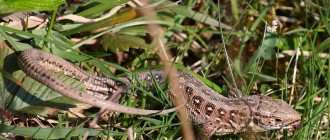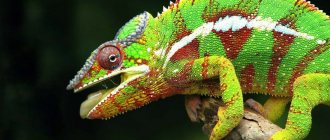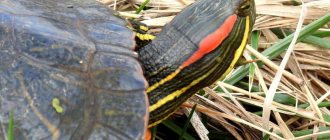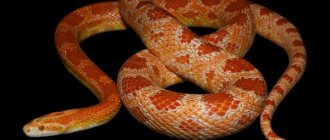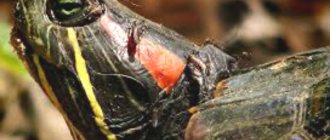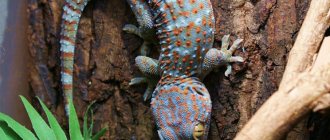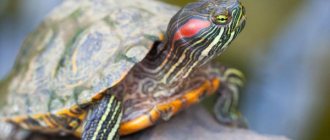Share this article:
We are all familiar with cute, nimble creatures called nimble lizards. They are very widespread and are found in steppes, forests and even mountains. Few people as a child did not dream of taking such a “little animal” to their home. Is it possible to keep them at home and what is required for this? Let’s find out.
Sandy lizard in nature
Lacerta agilis Linnaeus (this is its Latin name) inhabits large territories in Russia, limited by South Karelia, the south of the Arkhangelsk region, the Komi Republic, the Khanty-Mansi Autonomous Okrug, and Western Baikal region.
It is no less widespread in other countries: Southern England, Eastern France, the Baltics, Belarus, Ukraine, Georgia, Armenia, Azerbaijan, Kazakhstan, etc.
The lizard prefers dry, sun-warmed places in the forest, steppe or mountains no more than 1.5 km high. Reptiles live in pairs. At night they hide under stones, stumps or in burrows. They most often winter there.
Spreading
The habitat is located in Eurasia. It extends from central France in the west to Mongolia and China in the east. The northern border of the range runs in the south of the Scandinavian Peninsula, and the southern border through Turkey, the Caucasus and Central Asia.
Sanding lizards are absent from Spain, Italy, Greece, most of the Balkan Peninsula and southwestern France. They are extremely rarely observed in England and Scotland. Large populations exist in Moldova, Ukraine and European Russia.
Taxonomists distinguish from 12 to 20 subspecies. The nominate species is distributed in southern Scandinavia, Western and Central Europe.
The fast lizard feels most comfortable in areas with a temperate continental climate and sandy soil. In the south of its range it is found in the mountains at altitudes up to 2500 m above sea level.
What does a sand lizard look like?
Its length is 25-28 cm. In appearance, these representatives of the family of true lizards are similar to tailed amphibians, but differ from them in a more slender body.
- The head is pointed towards the muzzle. At the end of the latter there are two nostrils.
- The neck is short and thick.
- The eyes have eyelids, as well as a third eyelid - a special nictitating membrane to moisturize the eye.
- Behind the organs of vision you can see rounded eardrums. The sand lizard has excellent hearing.
- The organ of touch is the tongue: long, thin, forked at the end. Periodically, the lizard sticks it out of its mouth, exploring the surfaces.
The limbs of a lizard resemble those of a frog. All feet have five unwebbed toes, with claws necessary for climbing. The skin is dry, with horny scales. On the muzzle and abdomen they are larger and more like large scutes. As lizards grow, they molt. This happens about once every 4-5 years. Breathing is only pulmonary, no skin breathing.
There are a lot of color options for males (from light green and olive to almost black). In the southern regions green predominates. During the breeding season, males become brighter. Females are gray or brown with a variety of patterns. Juveniles are the same color, but with three stripes on the back.
Character and compatibility of the sand lizard
They use burrows dug by themselves or other animals as housing. They do not go far from them, a maximum of 10-15 meters, even during hunting. In case of danger, they run away, disorienting the enemy by frequently changing the direction of movement.
Daytime activity. These lizards are very nimble: they run fast, climb high, jump well, can change the direction of movement with lightning speed, catch flies in flight, etc. For these “talents” they are called nimble.
At the same time, they are very careful, constantly on the alert. In case of any danger, they rush into a hole or climb onto a plant branch. If the pursuer grabs the lizard by the tail, it can save its life by throwing away part of it. In response to pain (and not to mechanical tension), a fracture occurs in the middle of one of the vertebrae. There is never any bleeding due to muscle contraction around the wound.
In the future, the tail will regenerate, that is, it will grow back, but it will be a little shorter and a slightly different color. It's a reflex.
Description
The sand lizard has a light underbelly and stripes on its back. Males are usually darker and more brightly colored, and their head, relative to the body, is larger than that of females; During the mating season they become brighter. There are several types of coloring: brown, green, gray. The lizards reach a length of 25 cm; there are individuals 35 cm long. During the mating season, males raise their heads and look around.
As a defense, these lizards drop their tail in case of danger. After which, within a few weeks (3-4), they grow a new one. But the spine that was in the old tail is replaced with cartilage. The tail can be thrown a huge number of times. Also, after discarding, it perfectly returns to its former appearance. The lizard is called a speedy lizard due to its ability to abruptly change the direction of movement in order to confuse its pursuer. This lizard is also capable of catching a fly in a jump, runs very quickly, and deftly climbs trees.
How to prepare an animal for keeping in a home terrarium
Preparation consists of three stages:
- Carefully examine the reptile's body for the presence of skin parasites. Most often these are ticks that are brightly colored and therefore visible even to the naked eye. These parasites are not dangerous for humans, but they cause a lot of inconvenience to the lizard itself and can even lead to its death.
- Quarantine for 2-3 weeks.
- Deworming using special anthelmintics for reptiles.
Nutrition
Spotted leopard geckos mainly feed on insects, small rodents and lizards, spiders and even their young. But the optimal food at home is small cockroaches and crickets. But there is no need to abuse such delicacies as zofobas and mealworms. This can lead to obesity of the animal and negatively affect its reproductive function. In the summer, good insect food options include:
- Locust.
- Grasshoppers.
- Green caterpillars of butterflies that are not covered with hairs.
But you need to keep in mind that insects can have worms, mites and other infections, so it is recommended to initially prevent various parasites.
Giving maggots is strictly prohibited, because of their external digestive system, which begins to digest the zublefar from the inside, as a result of which they can die. It is also not recommended to feed earthworms, as well as citrus products.
Approximate diet of leopard geckos:
- During the first few weeks, no more than two small crickets at a time.
- The older small generation up to three months - no more than three medium crickets per day.
- From three to six months - no more than five large crickets at a time and every other day.
- Up to a year - no more than six large crickets at a time and several times a week.
- Over a year old - no more than ten large crickets at one time and several times a week.
It should be remembered that you need to feed your reptile low-fat food based on the individual characteristics of the body, i.e. how much it will eat, the main thing is not to overfeed. And it is advisable to feed leopard geckos in the morning and evening, adding minerals and vitamins to its diet, otherwise without them it may simply die.
How to set up a terrarium
Dimensions . A container of 40 by 60 by 40 cm will be sufficient for maintenance. The door should be on the side, not on the top. Then the lizard will see that it is not being attacked and will experience less stress. It is acceptable to keep it in a spacious, low aquarium without a lid. But never in any boxes!
Microclimate . Air temperature monitoring must be carried out, including at night. It is better to create two temperature zones: hot (36 °C) and cool (up to 30 °C).
Night temperature should not be less than 21 °C. Otherwise, the lizards’ metabolism slows down, they become lethargic or even go into hibernation.
There are various devices available to maintain the correct temperature. You can buy them at pet stores. The following are used in terrariums:
- Lamps (incandescent, mirror, fluorescent, halogen, mercury).
- Thermal stone. This is an artificial stone that, when turned on, simultaneously creates bottom heating and decorates the terrarium. Negative point: may heat up above the stated temperature.
- Thermal cord. Also used for bottom heating. Place under or inside the terrarium. Using the thickness of the soil, you can create different heating points.
- Thermal mat. Used in the same way as a thermal cord.
Sunlight . Install a UV lamp marked 10-12%. It must work around the clock and be replaced every six months. Without ultraviolet light, calcium and vitamin D are poorly absorbed, the reptile’s bones begin to deteriorate, and it dies a painful death.
Humidity control . The terrarium must have a bowl of water of such a size that the lizard can climb into it. It is located in a cool area. Additionally, you can spray or use damp sponges. It is also recommended to avoid overwatering, as fungus will appear. To do this, ventilation in the home must be good.
You can also install a wet chamber in the terrarium, into which the lizard will climb as needed. It can be made from a plastic container, with a hole cut out on the side of which the animal can fit through. Coconut substrate or paper napkins are poured onto the bottom of the chamber. The soil in the container must be periodically moistened, maintaining moderate humidity.
Decor . Equip several shelters and a pond. All decor should not have sharp edges so that the lizard does not get hurt. You can place several branches for climbing.
at the bottom of the terrarium, except for small shavings, sand, etc. They can get into the gastrointestinal tract with food and cause problems.
This FAQ has been compiled in response to numerous questions regarding the intelligence and tameability of various groups and species of reptiles. It is organized as a set of questions and answers. If you have experience in taming reptiles, additions or adjustments to this, write to me and your comments will be taken into account.
Can a reptile become tame?
In short: YES. To be more specific, the majority will most likely do so, but some will not. No one has ever bred domesticated reptiles to specifically shape their character, although some captive-bred species, such as the corn snake, are milder in character than wild ones. Some species (and individuals) are more likely to become accustomed to humans than others. Some of them will stop hiding when you appear and will start eating out of your hands, but will never allow you to touch them. Some of them will tolerate being squeezed in exchange for tasty food, others will hate this process. Some will run away, others will bite. However, some reptiles will be truly tame and will eventually love having their necks scratched. If you want to have a tame pet, then when buying a reptile, choose the one that seems most calm and friendly to you. If you are not willing to invest a lot of time and effort without a guarantee of success, do not take on difficult species. Some species are friendly in childhood, but begin to show aggressiveness as they grow older. Reticulated pythons have just such a reputation. However, some breeders report that their reticulated pythons are quite adequate and friendly, and that with age, these snakes “get wild” not only because this is a trait of their character, but also due to less frequent contact with the owner when the python becomes large. Some reptile species, no matter how tame they are, can be dangerous when they get large enough. They can harm humans if they are scared or angry. And they could potentially kill you if they mistake you for food. No matter how tame your reptile has become, be prepared for the possibility that it might bite or scratch if it gets scared or angry. In this case, it is better to use tongs and gloves. Remember: ALL REPTILES ARE WILD ANIMALS. Don't forget this, and many troubles will pass you by.
Do reptiles like to be petted?
Some people like it. I know several boa constrictors who absolutely love it, even when their head is touched. The point is this: although stroking is an unnatural state for reptiles, if they get used to it, they begin to love this process. Many snakes will like to sit in a warm, dark place, similar to that found under a T-shirt. If your method of cuddling your pet is to let it curl up on your stomach under your shirt while you read a book, then a snake is the perfect animal for you. Turtles are far from plush to the touch, but many people enjoy scratching their belly, i.e. the lower part of their shell, and the turtles demonstrate that they like it. “I had the opportunity to keep several young Galapagos tortoises at home. They float on clouds if you scratch their jaws and necks.” How do I know if my reptile likes it when I pet it? Your animal likes affection if: • It doesn't leave you when the opportunity presents itself; • It doesn't try to avoid your hands; • Falls asleep in your arms; • Stays close to you when you stop touching it; • Visibly relaxes when you approach; • Doesn't hiss or bite.
How smart are snakes?
Snakes have VERY humble minds. The animals they feed on have much more developed intelligence. However, snakes are capable of developing some conditioned reflexes. For example, if, when opening a terrarium, you always give the snake food, then over time it will begin to perceive any opening of the door as an invitation to dinner. And sooner or later it will start to bite into the first thing that appears from this door, including your hand.
How smart are turtles?
Much smarter than snakes. Turtles can learn some small tricks and useful skills if given enough time and rewarded with tasty food.
Turtles are very conservative creatures; if something becomes a habit, they do not like to change it. If they live in the same place, they will remember where to get food and that it comes from the refrigerator, where there is a saucer of water for them, where their favorite place to go to the toilet is (it's wise to put papers there), and that you are a source of good food. things in their life. Subsequently, the latter will lead to the turtle following you around the room or yard to convince you to scratch its head or give it something tasty. One friend told me that his tree turtle is potty trained, sits near the refrigerator if he wants to eat, goes to the bathroom and sits in front of the bathtub if he thinks it's time for her to take a shower.
All my aquatic turtles know that food comes from the kitchen, and they can easily differentiate fingers from food if they want to. I also think that turtles have a concept of fun or play, i.e. activities that give them no practical benefit but bring them pleasure (try playing submarine with your turtle). “Henry (the turtle) remembered that the nozzle on a garden hose was either orange or bright yellow. After a while I started leaving the hose on low and he drank cold, fresh water whenever he wanted.”
How smart are lizards?
It depends on the species. Anoles and most geckos are no different in intelligence. Others, such as some iguanas, are quite intelligent, and some species of monitor lizards are very smart - almost as smart as, for example, the parakeet. Iguanas are perhaps moderately intelligent. De Vosjoli, in his Guide to Keeping Green Iguanas, tells the story of a herpetologist at a large zoo who once saw an iguana hitting a tree with its tail, causing two fruits to fall from the tree. At this time, another iguana ran up and ate both fruits. The first iguana grabbed the second by the legs, but it ran away. This, he said, was the most intelligent scene he had ever observed in iguanas. The iguana can certainly learn from experience and identify simple cause-and-effect relationships. It takes time and patience, but people have reported success with harness training and potty training (iguanas that were about to defecate were brought to the same place, eventually they got used to the fact that if they were put in that place, then need to defecate).
Do reptiles differentiate between people?
Undoubtedly, but not all to the same extent. It is well known that turtles distinguish between people. Snakes that are handled primarily and for a sufficient amount of time by one person recognize the owner and prefer him or her to other people. Nile monitors are used as "sentinel lizards" in some parts of Africa because... They remember well the people who feed them.
What should I do if a reptile bites me? It hurts?
Depending on the size of the teeth and the type of animal, this may simply be painful, the wound will be bleeding, or the bite site will turn into a bloody mess. All of us have been bitten. This is an integral part of the reptile hobby. We disinfect the wound, apply several stitches if necessary, and try not to talk too much about it (well, except to the attending physician). Unless you want a law to be passed that prohibits keeping our pets because one of the reptiles has bitten the owner (it doesn’t matter that no one would ever think of banning dogs or cats, because they also bite and scratch. Reptiles can). Never look for someone to blame if you are bitten, even if it was someone else's animal. If you are bitten, it means you did something wrong or simply no one is to blame. Never file a lawsuit against a store if you were bitten by their animal - you have to start with the fact that you wanted to hold the animal, right? Sometimes snakes break their teeth when they bite. This is a normal part of life. If one of the teeth broken during the bite remains embedded in the skin, treat it as if it were a splinter, although the teeth usually come out more easily than most splinters. Reptiles do not suffer from rabies, which distinguishes them from cats and dogs. Most turtle bites are pincer bites and do not draw blood. However, a large turtle can bite well. Particular attention should be paid to ensuring that children's delicate hands remain at a decent distance from the animal's mouth. It is a myth that a turtle can bite off a person's leg. The most unpleasant part of a turtle bite in most cases is removing the animal from the bite site, because... turtles clench their jaws tightly and for a long time.
My reptile is very shy. How to tame her?
With a lot of patience. When the animal is no longer afraid of you, when you pass by the terrarium, change the water, clean, feed it, you can try to gently touch it. If you carefully observe the animal, you will know when and when you can do this and when you shouldn’t. Start taming gradually if you don't want to scare the animal away from the very beginning. To begin with, it is enough to hold the animal for a few minutes a day, several times a day, simply lifting it, without holding it or limiting its movements. When (if at all) he gets used to it to the point that he won't try to escape, carefully remove him from the terrarium. He will probably squirm and try to escape. Gently secure it until the animal calms down, hold it for a few more seconds and return it back to the terrarium. The point of this manipulation is for him to understand with his tiny brain that you are not going to eat him.
How can I tell if an animal loves me or what I do?
The hypothalamus is the part of the brain responsible for most emotions. Reptiles have it too, so they also have feelings. Since they cannot speak, we cannot know exactly what emotions are dominant in them. The main basic emotions are fear, aggression, pleasure. I don't think anyone would argue that reptiles don't feel this and don't express these emotions. They try to avoid what frightens them, attack when they are angry, and seek what pleases them. If you create an environment that is pleasant and comfortable for the animal, you will "like" it in the sense that the good things in its mind come from you, and therefore it wants to be with you. Accordingly, you will quickly and easily find out that the reptile does not like something: it will try to leave or even bite. Whether reptiles have more complex feelings, such as sympathy, is a very difficult question. For turtles I can answer with a cautious yes, but for others I don't know. In order to love someone, an animal must accurately distinguish between people and clearly prefer some to others. Turtles clearly distinguish people and choose. To my surprise, I noticed that my friendly snakes clearly do not like some people, but I cannot understand the reason for this. One person said that his turtle is very socialized: when he reads a book, lying on the floor, the turtle comes and climbs on his back and sits there for about 15 minutes. In general, when answering this question, use your own thoughts, and you, you'll probably be right
How to potty train a reptile?
Generally speaking, you cannot potty train a reptile. She will teach you. Many reptiles tend to follow established habits, including pooping in a specific place. Simply placing paper in this place where the reptile usually does its business will make your life much easier. But there are exceptions to this rule. Supposedly, aquatic monitors can be trained, and leopard geckos tend to choose a particular place to go to the toilet and go there all the time. Many reptiles prefer to use a container of water in their terrarium to defecate, and this can also be used.
How often should I handle my animal?
The more, the better, but not so much that the animal has no time to sleep and eat. Especially new animals, it is important to leave them alone for the first few days or weeks while they adjust and begin to eat normally. They can then be handled for short periods of time a couple of times a day. Watch the animal. If it is very stressful, reduce contact time to a minimum.
Of course, when you tame an animal, you make it nervous. Before you begin taming, make sure the animal is well fed and comfortable in its new environment. Then the few days of anxiety that taming brings with it won't be too harmful.
Can a snake learn to perform tricks?
No. Yes. May be. One of the readers writes that she taught the snake to crawl towards her when she pats the floor.
Can turtles learn to do tricks?
Yes. Just use your imagination, time and encouragement.
Can lizards learn to perform tricks?
Not certainly in that way. Many can learn to eat from your hands, or rest while lying on your body.
Is it possible to let a reptile roam in the yard?
No. Reptiles tend to come and go as they please. A reliable fence will help in this case.
Can I put my reptile on a leash and walk it?
Some lizards can be trained to walk on a leash. I've heard that this can be done with iguanas and cape monitor lizards. For these purposes, you can use harnesses for cats or rabbits. Never make holes in a turtle's shell in order to tie it on a leash! Turtles cannot walk on a leash, and damaged shells can become inflamed. In addition, the shell is a living bone, and the perforation procedure is not pleasant for the turtle, to put it mildly.
Which reptiles are easy to tame?
Note: There are individual differences within the same species. I have two corn snakes. One of them is so tame that I can do whatever I want with him, the second is timid and hates being touched, despite the fact that he has known me for a very long time. There are always exceptions! • Corn snake; • King snakes; • Milk snakes; • Common boa constrictor; • Red-eared turtles; • Snapping turtle (but they grow big and bite often). • Common iguanas; • Royal pythons; • Some monitor lizards, such as the Cape monitor, but this takes time; • Tiger pythons (but they get huge, making them difficult to handle. Adults can cause harm to humans. Not an ideal pet!) • American species of box turtles.
Which reptiles tend to stay wild?
Note: There are individual differences within the same species. If you have a tame dog-headed boa constrictor, I sincerely envy you! There are exceptions to any rule. • Colubrid snakes; • Whip snakes; • Most species of small lizards; • White-lipped python; • Toki geckos; • Basilisks.
Which reptiles tend to be aggressive?
• Chondropythons • Dog boas and other types of tree boas (long teeth!) • Anacondas, especially green ones. • Some monitor lizards, for example, Nile; • Reticulated pythons tend to have bad temperaments. Although some people report that their pythons are tame and friendly. But in any case, this animal is not for beginners
Which reptiles are not suitable for non-professionals?
• Gilatier's snake teeth (Heloderma suspectum) (poisonous and prohibited for keeping) • Rattlesnakes (can become completely tame, but just one bite is enough to send you to the next world); • Any poisonous snakes; • Crocodiles and alligators (although there is evidence of the ability to tame swamp crocodiles (Crocodylus palustris) and some other crocodiles raised from an early age); • Komodo dragons; • Flat-horned toad lizards (Phrynosoma) (they become tame, but feed mainly on ants).
Author: ©1995 Valeri Haecky Translation: Elena
Feeding the sand lizard
In nature, these reptiles feed on beetles, grasshoppers, earthworms, caterpillars and spiders. That is why the diet must include live food. You can catch it yourself, but in this case the insects may be infected with parasites.
You can find crickets and cockroaches in pet stores. It’s a good idea to feed mealworms, tobacco hawkmoth, and locusts.
Occasionally it is allowed to serve meat (raw beef or boiled chicken) and eggs. If the pieces are large, the lizard will chew them in its mouth for a long time, spitting them out and swallowing them again.
Food should not be monotonous. For example, if you feed only mealworms, this is fraught with fatty liver in the lizard.
Special mineral and vitamin supplements should be given regularly. They are available in powder form.
Feed is given daily, 3 times a day in summer and twice in winter, in the amount of 5-10 insects per meal. Adult lizards can take food on their own, but juveniles are recommended to give it with tweezers. It is better to remove uneaten insects from the terrarium at night. There are cases where grasshoppers and crickets damaged the skin of a sleeping lizard.
Common lizard: what to feed
There is an opinion that this nimble amphibian can be given pieces of “human” food, leftovers from a family meal. In principle, this is true, but this food should not be abused under any circumstances.
You should still provide a diet that is close to natural.
- That is why normal food for lizards are spiders, cockroaches, grasshoppers, and worms (even mealworms).
- You can prepare a nutritious mixture consisting of grated carrots and pieces of meat (minced meat is allowed).
- And if you add finely chopped spinach or dandelion leaves to such a mixture, the lizard will receive not only protein, but also the vitamins necessary for normal development.
Calcium supplements are also important for the reptile body, so sometimes food for lizards needs to be sprinkled with special feed calcium or powdered eggshells.
Is wintering in captivity necessary?
Not all breeders hibernate their lizards, but it is still very important. What does it affect:
- For reproduction. Lizards that do not hibernate do not mate.
- On the brightness of the color of males. “Non-sleeping” males fade over the winter and their color does not return in the spring.
- On the activity of the animal.
- For lifespan. Without hibernation, they get sick more often and live less.
Geckos
Such reptiles are very famous for their love of climbing walls, no matter how smooth they are. This becomes possible due to the presence of a large number of microvilli and growths on their short limbs.
We invite you to familiarize yourself with the English Bulldog photo and description of the breed characteristics
Therefore, you should always keep nimble domestic lizards in sight, especially until the period of adaptation to the new environment ends.
The size of the reptile can vary from 1.5 to 35 centimeters. You can easily recognize a gecko by its appearance.
Such lizards have a flattened body, very small legs, a long thick tail and a disproportionately large head.
The second feature of this breed is the absence of eyelids on the eyes, therefore, in order to avoid drying out the eyes, the gecko has to lick them from time to time. These small reptiles live on average 15-20 years.
How to hibernate a lizard and bring it out of it?
- A month before the planned hibernation, you should strengthen and diversify your diet. (This does not apply to individuals whose weight is normal.)
- After this period, the lizard does not need to be fed for a week to cleanse the intestines.
- Next, gradually or stepwise (5 degrees at a time) begin to reduce the temperature in the terrarium. Each “step” should take from 3 to 7 hours.
- The final temperature for hibernation is +5, +7.
A temperature-controlled refrigerator is suitable for wintering. There is no need to place the entire terrarium there. It is enough to place the lizard in a container with holes for air.
It is important to know that a hibernating lizard breathes about 2 times per minute, and the heartbeat is practically not felt. For there were cases when owners threw out live lizards, mistakenly considering them dead.
- Coming out of hibernation begins with a gradual increase in temperature.
- Next, you will need to provide UV irradiation and good heating.
- For the first three days, the lizard can only warm itself and not eat anything.
- You should not force feed her.
- If the outcome is successful, the lizard will soon become active again and shed.
Hibernation should last no less than one and no more than four months. Why exactly these deadlines?
- If wintering lasts less than a month, then it is not enough and problems arise similar to those in the absence of hibernation at all.
- If the lizard “sleeps” beyond the specified period, then it does not have enough energy and substances, exhaustion begins, and it dies during hibernation or upon emerging from it.
Pet price
One of the important factors when deciding to buy a reptile is not only the cost of the reptile itself, but also the cost of maintaining it.
The price of a lizard depends on many factors. This is age, gender, appearance. It can vary over large ranges. For example, a green iguana can cost 1,000 or 25,000 rubles. And this is still a small spread; the upper limit of the price of an exotic pet is very high.
The terrarium and food also cost extra money. A lizard cannot live without a house; it will also require certain equipment and accessories. The equipment serves to provide a suitable microclimate. Optional, but highly desirable, include various decorative elements that will not only provide comfortable living for the lizard in the terrarium, but will also decorate the interior.
It is also necessary to take into account the diet of the future pet; among lizards there are carnivores and those that prefer plant foods.
What health problems can a sand lizard have?
Most often there are two of them:
- Binge eating . Leads to decreased activity, illness, shortened life, and problems with reproduction.
Signs of overeating: the animal hardly eats, lies a lot and moves little, does not shed, and its belly has become enlarged. Under no circumstances should the problem be solved simply by not giving food! It is necessary to gradually reduce its amount, while simultaneously increasing daylight hours and heating. All these measures should speed up metabolic processes and normalize the condition.
- Malnutrition . Fasting for 2-4 weeks without hibernation is considered harmful.
In this case, the body is depleted, metabolism is disrupted, growth slows down, color deteriorates, problems with reproduction, molting and hibernation occur. Malnutrition can be determined by thinness, sagging skin, a shriveled tail, very increased or, conversely, decreased activity, and aggressiveness towards everything.
You cannot give such animals a lot of food at once! You need to start with 1-2 nutritious insects, very gradually increasing the portion to normal. At the same time, increase daylight hours and heating, as well as humidity. It is important to know that after a long fast, the process of digesting food takes twice as long as before.
Advice: if you need to leave for 1-2 weeks and leave the lizard at home, then you should reduce the temperature in the terrarium to 15-20 degrees and turn off the lighting.
In this case, activity will remain, but metabolic processes will slow down, due to which energy and nutrient reserves will begin to be consumed more slowly. Don't forget to leave water too!
How to monitor the health of hamsters?
Your pet will occasionally need to visit a veterinarian; choose a veterinarian who has experience working with rodents. You should visit your veterinarian a few days after your hamster comes into your home, and then every year. You should contact a specialist if your hamster has a runny nose or wheezing, if he eats or drinks irregularly, if his teeth have grown too long, if he has bald patches, or if he has ulcers on his paws. You should also contact a veterinarian if there is blood in the urine, itching or loose stools.
Reproduction of the sand lizard
The male, ready for reproduction, raises his body above the ground and looks around. Seeing a female, he chases her. If he manages to catch it, he grabs it with his mouth at the base of the tail, clasps it with his paws and mates.
After some time (usually the end of May), the female lays from 6 to 16 fairly large eggs and buries them in a shallow hole. The embryo develops inside the egg, and a ready-made young lizard emerges (in July). Seasoned males can eat small lizards.
In conclusion, it only remains to say that despite their exoticism, quick lizards are rather unpretentious creatures. The main thing is to create the “right” conditions for them from the very beginning. They are also cute and smart. Watching them is a pleasure for both children and adults.
Conditions for proper habitat of lizards
The terrarium should be chosen depending on the size and type of the future inhabitant. For species such as viviparous, fast, green lizards, a horizontal type design .
Arboreal individuals usually live on some vertical surfaces. For example, if you take two fast lizards, they will need a special snake nursery measuring about 60-40 cm, maybe even larger. You don’t have to buy a home for the iguana, because it can roam freely around the house, but you shouldn’t create drafts, otherwise it might get sick. A terrarium for these reptiles should have a variety of plants, as well as water. If there is not enough moisture for your animal, then you can spray the leaves of the plants with a spray bottle.
It is not very prudent to keep lizards of different sexes in the same terrarium, as they can fight. There are only certain periods when they can mate and reproduce; at other times it is best to plant them separately, otherwise they can kill each other.
No entries found.
